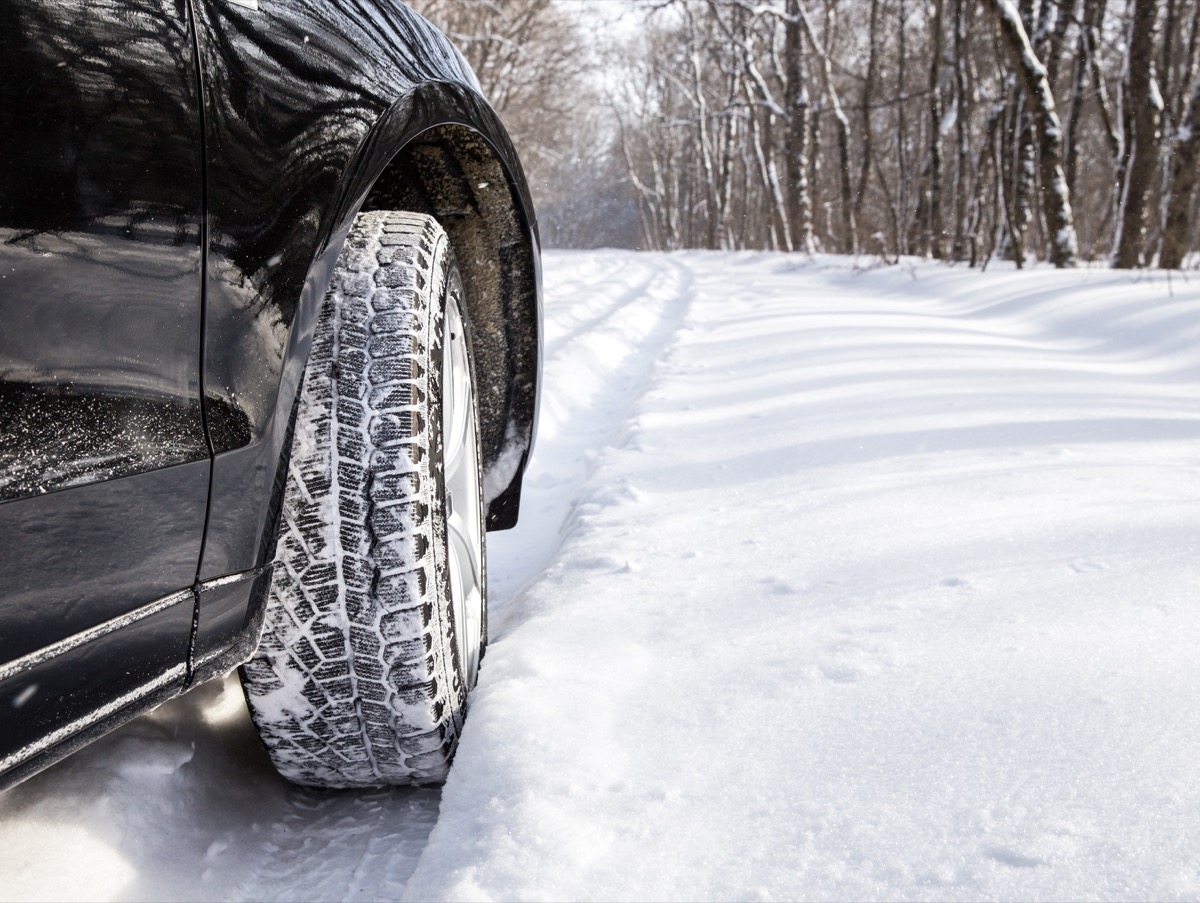4 Mistakes You’re Making When Warming Your Car Up, Experts Warn

If you live in a cold-weather climate, then warming up your car is likely part of your winter routine—as much a habit as bundling up in a sturdy pair of mittens and turning the faucet onto a drip when the temperature goes below freezing. In many ways, warming up your vehicle is pretty self-explanatory: You idle it before entering to lubricate the engine and make the cabin toasty. But according to auto experts, there’s more to it than that—and they say many car owners warm up their vehicles all wrong. Read on to learn the things the pros want you to avoid. Your car—and wallet—could pay if you don’t.
RELATED: 10 Mistakes You’re Making That Keep Your House Cold, Experts Say.
1
You let the car idle for too long.

One of the biggest mistakes experts agree drivers make is warming up their cars for too long.
“Modern engines and oils are designed to operate efficiently from startup,” says Todd Bialaszewski, certified master mechanic and founder of Junk Car Medics. “You should only warm up your engine for 30 seconds to one minute before driving, even on the coldest winter days—any longer risks engine damage from incomplete combustion and oil dilution.”
You’ll also waste gas and pollute the air.
2
You speed off aggressively.

While your car doesn’t need to sit idly for 15 minutes in order to work effectively, that doesn’t mean you should speed out of your driveway like you’re in the Fast & Furious franchise.
“I’d avoid aggressive acceleration or high RPMs until your car reads normal operating temperature on the gauge,” says Hank Treadwell, owner of Tire Care 101.
Driving gently to warm up the vehicle will warm the entire thing equally, including the transmission and wheel components. Meandering through a few side streets before zipping onto the highway could be your new relaxing morning routine.
RELATED: 7 Ways to Winter-Proof Your Car, According to Experts.
3
You ignore your seat warmers.

If one of your primary reasons for warming up your car for an extended length of time is to get the cabin warm, we can’t blame you. However, auto pros say there are effective alternatives to this method, which, as mentioned, wastes gas and wrecks your engine.
“To warm the cabin, I recommend using the heat on full blast and seat warmers if equipped,” says Treadwell. “You don’t need more than one to two minutes to take the chill out of the interior once the engine is warm.”
You could also go old-school: “Having a blanket in the car to toss over your lap or children is a good way to stay warm while the vehicle warms up,” says Lauren Fix, founder of The Car Coach. She urges riders not to place the blanket under a car seat or on the seat, which could inhibit the seat’s safety mechanisms.
4
You leave your car unattended.

Is your warm-up routine to turn on your car, go into the house, finish a few last-minute tasks, and go back out to the car? Well, you should probably nip that habit now.
“First and foremost, it’s illegal in most states to leave your car unattended without first shutting off the engine and locking the ignition,” says Ben Michael, director of auto at Michael & Associates. “In addition to the illegality of it, you are also significantly increasing the chance of your car getting stolen—it takes little to no effort for someone to get in your front seat and take off since the engine is running and the keys are in the car.”
And that would be the biggest money sink of them all.
For more helpful advice delivered straight to your inbox, sign up for our daily newsletter.